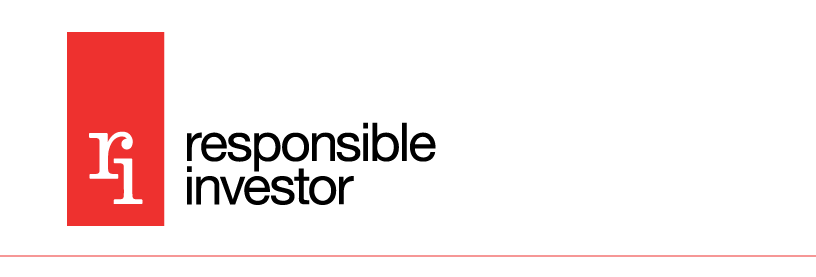
What are the investment implications of riots in one of the largest economies in the world?
Where do you stand on the expected long-term equity market impacts as a political party colours France’s electoral map brown at the EU elections and is gearing up for the next presidential election?
Does Germany’s watershed local election colour your view on Bunds?
And does the cynicism of the way I phrased these questions bother you?
We are not in a civil war, but there is a tear running through the fabric of our societies and it bleeds.
We can all see it. Many of you will have already lost a friend as we become strangers to those that think differently to us. I know I have. We cannot, it appear, seem to agree – anymore – to disagree.
What do you think that does to risk premia in emerging markets?
In the UK last month, people wanted to harm strangers because they are “strange”, a different skin colour, a different flag in the passport, a different gender identity.
Because apparently Europeans and Americans have concluded that the cardinal sin a person can commit is to pack up one’s bags and move to another place and try to call it home. History, of course, forever compelled to repeat itself as a farce.
Maybe time to look at commodity markets for negative beta?
The moral question
We all decide how to respond to this world in our personal lives in different ways. But anybody working in the responsible investment community has not just a moral but also a professional obligation to not return to business as usual. There is work here. The question is what to do?
For one, it should be apparent that we must prepare for risks from social conflicts the same way as we must for climate risks. This is no longer just a shadow, but a veritable spectre haunting Europe and the world.
Research I was involved in from earlier this year showed social risks could amplify direct physical climate risks by 2-3x. At the same time, they continue to be ignored in mainstream and climate risk exercises and stress-tests, as well as most private sector macro risk models.
It may appear uncomfortable to seek to translate social trauma into financial market impacts (maybe infrastructure is not the right play right now?). But this discomfort is an inherent reality for anybody who works in responsible investment. Markets and finance compel us to reframe tragedies as “risks” and healing as “opportunities”. Such is our world.
At the same time, a passive risk approach is clearly insufficient. What is our role in mending the tear in our social fabric?
Of course, we must reaffirm our understanding that responsible investment done right by default contributes to a better world. Climate change is arguably the number one cleaver tearing at social stability, driving conflicts, migration and economic dislocation.
So yes, fighting climate change is fighting riots on British streets. We should stop apologising for investing on the basis of our wallet and our norms and values.
At the same time, more emphasis needs to be placed on social issues. While nature was the intuitive follow-up to the climate focus, it at least in part helped to continue to marginalise social issues in terms of resources and brain space. This was a mistake.
Just as the traditional cliché suggests that governance is the only ESG factor that really drives performance, so too is there no sustainability outcome that can be achieved without social cohesion. And while “Just Transition” is a popular catchphrase, much of it remains an “add-on” to the climate conversation.
It is time to give social risks and impacts the prioritisation they deserve, through our resources, our time and our ideas.
Abstraction distraction
Of course, it is not just what we do but how we talk about it.
Much of our industry lives in “icy wastelands of abstraction”, to use the words of German philosopher Walter Benjamin, disconnected in the way we communicate sustainability metrics. We use social KPIs like TRCFs or Total Recordable Case Frequency, which is different to LTIFs or Lost Time Injury Frequency. It’s gibberish!
We may have 500 million “sustainability deaths” this century, more than all the victims of war and political extremism in the last century combined. But we continue to struggle to talk about this in a way that makes sense.
Last year, I argued investors should report their “Kill Score” by translating their financed emissions into potential future climate deaths. I appreciate this is an unpopular and perhaps extreme proposition. But it’s clear we have to do better at making the case, at showing the benefits of doing the right thing.
We also have to review political positioning. Social peace and liberty is a public good with a ton of private externalities. Advocate for it! “Who will speak these days, if not I, if not you?” is the provocation American poet Muriel Rukeyser lays at all our feet.
She also reminds us in the same poem that “the universe is made of stories, not of atoms”. Responsible investors need to help create and weave these shared stories into our tearing fabric. To invest in a shared public space and values.
Put simply, we need to invest in increasing social cohesion and stability. The equivalent of climate mitigation to prevent adaptation for social risks.
To do that, we have to understand how the companies we finance and lend to amplify the social dislocation. What is the role of social media in fragmenting society? Of artificial intelligence? Of tax avoidance?
The same way we engage companies on their emissions, we need to engage companies on their contribution to loneliness, to fragmentation, to radicalisation.
I realise many investors are having these conversations, in some cases for many years now. The point is not to act like this is new, but to put these stories centre stage.










